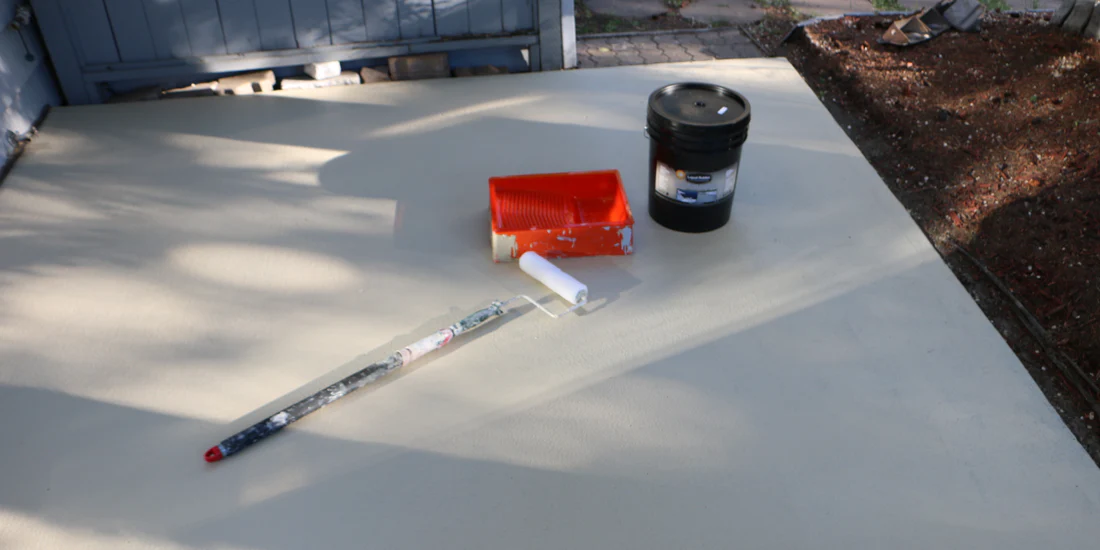Sealing concrete surfaces is an essential step in ensuring their longevity and protecting them from damage caused by water, chemicals, and the elements. One of the most effective and versatile solutions for this task is liquid rubber sealant for concrete. In this comprehensive DIY guide, we will walk you through every step of the process, from understanding the benefits of using liquid rubber sealant to choosing the right product and applying it correctly.
We will also provide expert tips and insights to help you achieve the best possible results. By the end of this guide, you will have all the knowledge and confidence you need to tackle any concrete sealing project like a pro.
Liquid rubber sealant for concrete is a flexible, waterproof membrane that is designed to create a long-lasting, impermeable barrier on concrete surfaces. It is formulated using advanced polymer technology, which allows it to bond strongly to a variety of substrates while remaining flexible and resistant to cracking, peeling, and other forms of damage. Liquid rubber sealants are also highly resistant to UV rays, chemicals, and temperature fluctuations, making them an ideal choice for both indoor and outdoor concrete sealing applications.
One of the most popular liquid rubber sealants on the market is Liquid Rubber Waterproof Sealant. We've specially design our product for sealing concrete surfaces and offers excellent adhesion, durability, and ease of application.
Benefits of Using Liquid Rubber Sealant for Concrete
- Waterproof protection: Liquid rubber sealants create an impermeable barrier that prevents water from penetrating the concrete surface, which can lead to damage such as cracking, spalling, and mold growth.
- Resistance to chemicals and UV rays: The advanced polymer technology used in liquid rubber sealants provides outstanding resistance to chemicals, UV rays, and other environmental factors that can cause damage and discoloration to concrete surfaces.
- Flexibility and crack-bridging ability: Liquid rubber sealants remain flexible even after curing, which allows them to accommodate the natural movement of concrete without cracking or peeling. This crack-bridging ability helps to protect the concrete surface from further damage.
- Ease of application: Liquid rubber sealants can be applied using a variety of methods, including brush, roller, or spray, making them suitable for DIYers and professionals alike.
- Low VOCs and environmentally friendly: Many liquid rubber sealants are formulated with low VOCs and are non-toxic, making them a more environmentally friendly option compared to some other concrete sealing products.
Choosing the Right Sealant
Before you begin your concrete sealing project, it's essential to choose the right liquid rubber sealant product for your specific needs. Here are some factors to consider when making your selection:
- Substrate compatibility: Ensure that the liquid rubber sealant you choose is specifically designed for use on concrete surfaces. Some products may not adhere well to concrete or may not offer the same level of protection and durability.
- Indoor vs. outdoor use: Consider whether your concrete sealing project is for an indoor or outdoor surface, as this may affect the type of product you need. Some liquid rubber sealants are specifically formulated for outdoor use and offer enhanced UV and weather resistance.
- Finish and color: Liquid rubber sealants are available in various finishes, including matte, semi-gloss, and high-gloss, as well as a range of colors. Choose a product that provides the desired finish and color for your project.
- Coverage and application method: Different liquid rubber sealants may offer varying coverage rates and application methods. Be sure to choose a product that provides adequate coverage for your project and can be applied using your preferred method (brush, roller, or spray).
Preparing Your Concrete Surface for Sealing
Proper surface preparation is crucial for ensuring a successful concrete sealing project. Follow these steps to prepare your concrete surface for sealing with liquid rubber sealant:
- Clean the surface: Remove any dirt, dust, grease, or oil from the surface using a power washer or a concrete cleaner and degreaser. Be sure to rinse thoroughly and allow the surface to dry completely before proceeding.
- Repair any cracks or damage: Inspect the concrete surface for any cracks, chips, or other damage, and repair as needed using a suitable concrete repair product. Allow any repairs to cure fully before sealing.
- Remove any existing sealers or coatings: If your concrete surface has been previously sealed or coated, you may need to remove the old material to ensure proper adhesion of the liquid rubber sealant. This can be done using a chemical stripper or mechanical methods such as sandblasting or grinding.
- Ensure the surface is dry: Before applying the liquid rubber sealant, make sure the concrete surface is completely dry. Moisture trapped beneath the sealant can lead to adhesion issues and reduced performance of the sealant.
Application Process and Techniques for Liquid Rubber Sealant
Once your concrete surface is clean, dry, and free of any existing coatings or sealers, you can begin the application process. Follow these steps for a successful application of liquid rubber sealant:
- Mix the product: Some liquid rubber sealants may require mixing before use. Be sure to follow the manufacturer's instructions for mixing and preparing the product.
- Apply a primer (if required): Depending on the specific liquid rubber sealant product you are using, a primer may be recommended or required for optimal adhesion and performance on concrete surfaces. Follow the manufacturer's guidelines for primer application, if necessary.
- Apply the liquid rubber sealant: Using a brush, roller, or spray equipment, apply the liquid rubber sealant evenly and uniformly to the entire concrete surface. Be sure to apply the product at the recommended coverage rate and thickness specified by the manufacturer.
- Apply additional coats (if needed): Some liquid rubber sealants may require multiple coats for optimal performance and durability. If additional coats are required, allow the first coat to dry according to the manufacturer's instructions before applying subsequent coats.
Drying and Curing Time
The drying and curing time for liquid rubber sealant can vary depending on factors such as temperature, humidity, and the specific product used. In general, most liquid rubber sealants will dry to the touch within a few hours and achieve full cure within 24 to 48 hours. Consult the manufacturer's guidelines for the specific drying and curing times for the product you are using.
During the drying and curing process, it's essential to protect the newly sealed surface from moisture, rain, and foot traffic to ensure optimal adhesion and performance.
Maintenance and Reapplication
One of the benefits of using liquid rubber sealant for concrete is its long-lasting protection and durability. However, over time, wear and tear can still occur, and reapplication may be necessary. To maintain the performance and appearance of your sealed concrete surface, follow these maintenance tips:
- Regularly clean the surface: Keep the sealed surface clean by regularly sweeping or washing away dirt, debris, and spills. This will help to prevent staining and maintain the appearance of the sealed surface.
- Inspect the surface for damage: Periodically inspect the sealed surface for any signs of damage, such as cracks, chips, or peeling sealant. Repair any damage as needed and reapply the liquid rubber sealant if necessary to maintain a continuous, waterproof barrier.
- Reapply the liquid rubber sealant as needed: Depending on the specific product used and the environmental conditions, reapplication of the liquid rubber sealant may be necessary every few years. Follow the manufacturer's guidelines for reapplication to ensure continued protection and performance.
Common Mistakes to Avoid
To achieve the best possible results with your liquid rubber sealant for concrete project, be sure to avoid these common mistakes:
- Applying the product to a dirty or damp surface: Proper surface preparation is critical to the success of any concrete sealing project. Ensure that your surface is clean, dry, and free of any existing coatings or sealers before applying the liquid rubber sealant.
- Applying the product too thickly: Applying the liquid rubber sealant too thickly can lead to issues such as bubbling, blistering, or insufficient drying and curing. Be sure to apply the product at the recommended coverage rate and thickness specified by the manufacturer.
- Not allowing adequate drying and curing time: Failing to allow the liquid rubber sealant to dry and cure fully before exposing the surface to moisture, rain, or foot traffic can result in adhesion issues and reduced performance. Always follow the manufacturer's guidelines for drying and curing times.
- Ignoring maintenance and reapplication: Regular maintenance and periodic reapplication of the liquid rubber sealant are essential to maintaining the performance and appearance of your sealed concrete surface. Don't neglect these important steps.
Safety Precautions When Working with Liquid Rubber Sealants
Working with liquid rubber sealants can pose some safety risks, so it's essential to take the necessary precautions to protect yourself and others:
- Wear appropriate personal protective equipment (PPE): When working with liquid rubber sealants, always wear appropriate PPE, such as gloves, safety glasses, and a respirator if using a spray application method.
- Ensure proper ventilation: If applying liquid rubber sealant indoors or in an enclosed space, ensure proper ventilation to minimize the risk of inhaling fumes or vapors.
- Follow manufacturer's safety guidelines: Always consult the manufacturer's safety data sheet (SDS) and follow any specific safety recommendations provided.
- Store and dispose of materials properly: Store liquid rubber sealants and other materials in a cool, dry place away from heat sources, sparks, or open flames. Dispose of any waste materials or empty containers according to local regulations.
Let's Seal The Deal!
Sealing concrete surfaces with liquid rubber sealant is an effective and long-lasting solution that provides numerous benefits, including waterproof protection, resistance to chemicals and UV rays, and flexibility to prevent cracks and damage. By following this comprehensive DIY guide, you can achieve professional-quality results and extend the life and appearance of your concrete surfaces.
So, choose the right product, like the popular Liquid Rubber Waterproof Sealant, and get started on your way to a perfectly sealed concrete surface.




